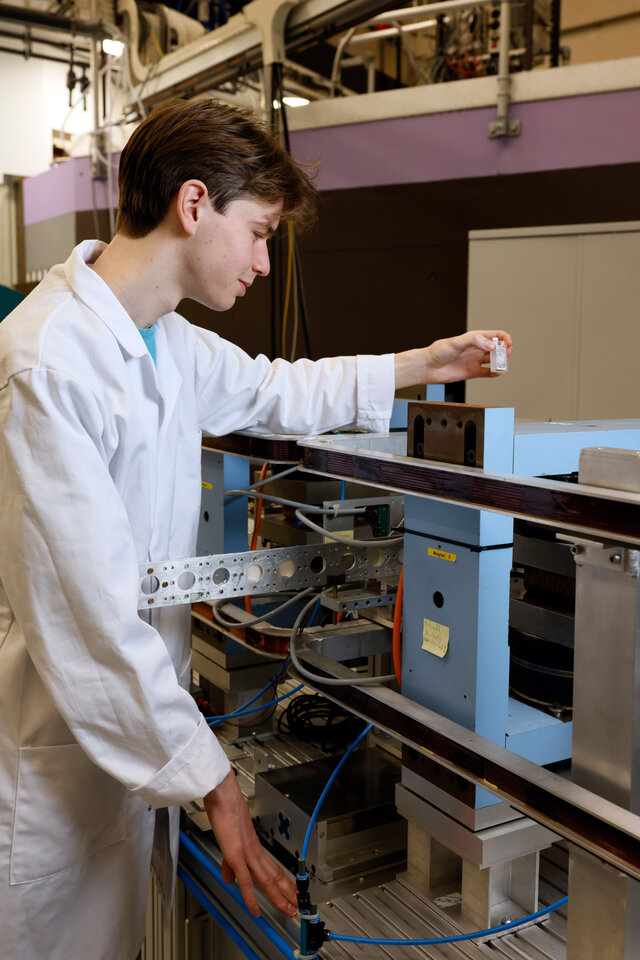Research Tools TU Delft Reactor Institute
Research with use of the reactor and other related instruments offer a wide array of possibilities to research materials. From molecules, polymers, proteins, cells up till artefacts. We specialize in the use of neutrons, positrons, gamma rays in our advanced scientific instrumentation, to generate a leading edge in material research for academia and industry.
The User Office is there to assist all users of the reactor facilities. We aim to help with all organisational questions and if we can’t be of assistance we can find the correct person to contact. Please also check our FAQ/QA tab for quick answers!
For questions with a scientific or technical background the instrument scientist or the head of the instrument group can be contacted directly.
As User Office, we are also the main entry for proposals and experimental reports.
Contact information

User office

Dr. ing. J. Plomp
Proposal application
With the blue button below a proposal application form will be opened in a new browser. You will get an automatic message after submitting and will be able to download your application.
Before pressing the blue button please have the following information available:
- Contact information, including co-proposers
- What kind of use (industry, scientific, student training)
- Instrument of choice including sample environment requests
- Sample information for safety assessment
- A document (pdf, word) of max. 2 pages containing:
- Title
- Abstract
- Proposed experiment
- Justification of beamtime
- References
Procedure after application
Proposals will be reviewed as soon as possible by the dedicated instrument team for technical feasibility. In case of oversubscription of the available beamtime a local university committee will decide on who will receive the beamtime (not the instrument team) . When the beamtime is awarded the instrument team will contact you as soon as possible to plan the experiment. When the beamtime is not awarded you will get a message from the User Office as soon as possible. We are aiming for a fair and swift procedure. After the successful beamtime we expect a short experimental report within 4 months, the format will be given to you by the User Office.
-
Please go to the proposal application tab and fill out the online form
-
This is up to the industry users and can range from just access to the instrument to full service measurement including analysis and reporting.
-
Scientific users may receive comprehensive support from the instrument team throughout the experiment, including assistance with data analysis if needed.
-
For scientific use with the intention to publish the results there is no charge. For industry use or scientific use with an industry partner where there is no public IP we are obligated to ask for a fee in the range of 5.000 euro per day (exact amount depending on the service).
-
These samples may need a special transport to our institute and a special internal permit needs to be arranged. Upon arrival the sample needs to be checked by our radiation protection team to determine if all is according to the internal permit.
-
Yes, in most cases samples are only slightly activated and ranging from a day to few days to cool down. Some may need a longer time to cooldown.
One can estimate the decay time for their own samples on the following website: https://www.ncnr.nist.gov/resources/activation/
Neutron flux for each instrument can be found on their respective website. Samples are always checked for activation before release. -
Yes usually the chemical sample can be disposed through the standard procedures in our labs.
-
This depends on the experimental requirement of the user. For simpler setups, it may be feasible to ship the samples to us, in agreement with the instrument team. However, for more complex sample preparations and / or experimental conditions it is recommended to be present during the beamtime.
-
We aim for a fair, swift and flexible procedure but it all depends on the number of applications, complexity of experiment and reactor program. In the best case one could do the experiment within a week but sometimes it can take months.
-
In case of industry use and paid beamtime the data is protected and will not be made public. In other cases we will make the data openly available, on request, after one year after the reduced data transfer to the user.
-
Open access is preferred but not mandatory.
-
In principle the standard procedure is that the user will receive the reduced data only, however is able to get the raw data on request.
-
Yes, data analysis support is available, however the level of assistance often depends on the expertise of the instrument team.
-
Yes, a dedicated chemical laboratory is available in the experimental (cold guide) hall. Simple sample preparation procedures can be carried out there. For more complicated procedures please discuss the possibilities with the instrument team beforehand.
-
Yes, its possible to utilize other techniques available in support of the neutron measurements carried out. For example, XRD, solid state NMR, Mossbauer, DLS etc. However, this may be considered a collaborative endeavour and should be discussed with the instrument team prior to proposal submission.
-
Unfortunately the current funding mechanism is such that we are not able to assist with funding for travel and accommodation.









